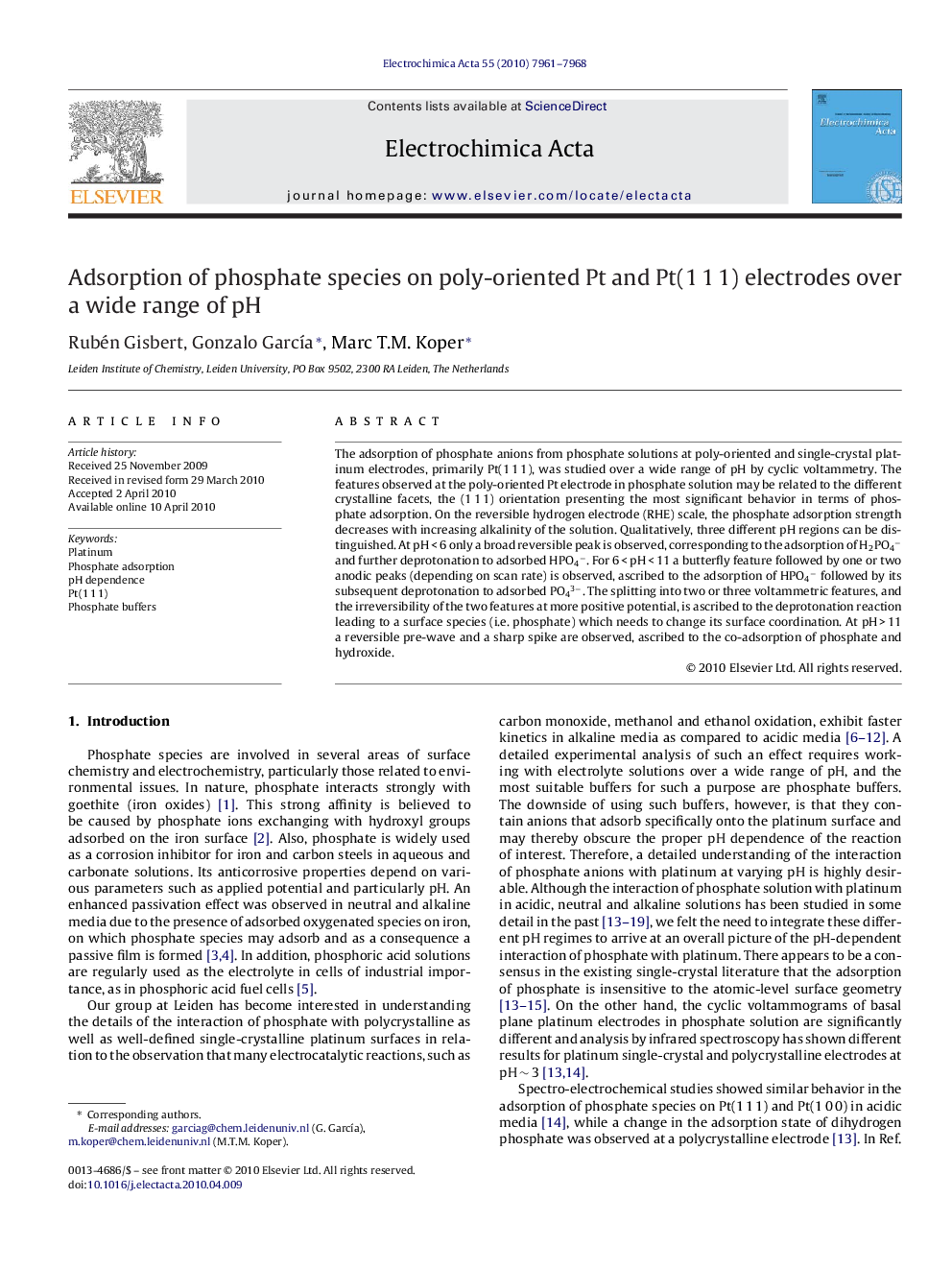| Article ID | Journal | Published Year | Pages | File Type |
|---|---|---|---|---|
| 190404 | Electrochimica Acta | 2010 | 8 Pages |
The adsorption of phosphate anions from phosphate solutions at poly-oriented and single-crystal platinum electrodes, primarily Pt(1 1 1), was studied over a wide range of pH by cyclic voltammetry. The features observed at the poly-oriented Pt electrode in phosphate solution may be related to the different crystalline facets, the (1 1 1) orientation presenting the most significant behavior in terms of phosphate adsorption. On the reversible hydrogen electrode (RHE) scale, the phosphate adsorption strength decreases with increasing alkalinity of the solution. Qualitatively, three different pH regions can be distinguished. At pH < 6 only a broad reversible peak is observed, corresponding to the adsorption of H2PO4− and further deprotonation to adsorbed HPO4−. For 6 < pH < 11 a butterfly feature followed by one or two anodic peaks (depending on scan rate) is observed, ascribed to the adsorption of HPO4− followed by its subsequent deprotonation to adsorbed PO43−. The splitting into two or three voltammetric features, and the irreversibility of the two features at more positive potential, is ascribed to the deprotonation reaction leading to a surface species (i.e. phosphate) which needs to change its surface coordination. At pH > 11 a reversible pre-wave and a sharp spike are observed, ascribed to the co-adsorption of phosphate and hydroxide.
